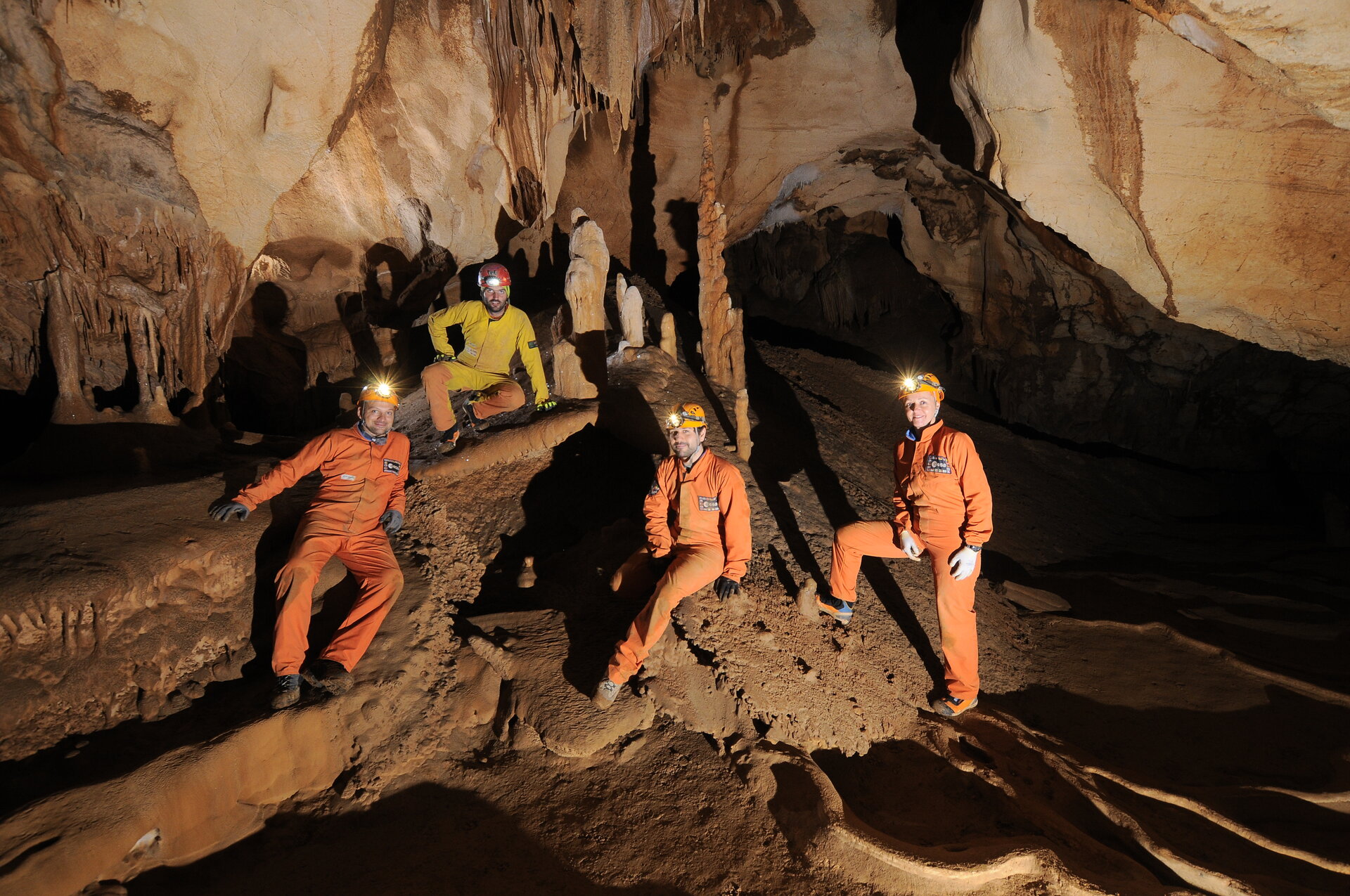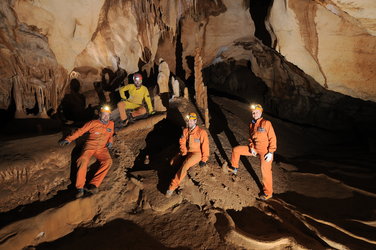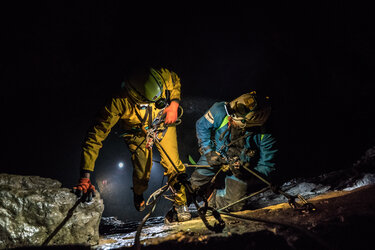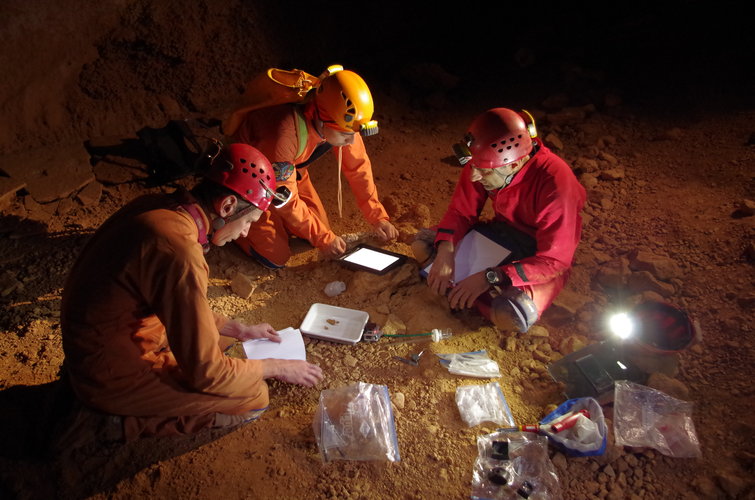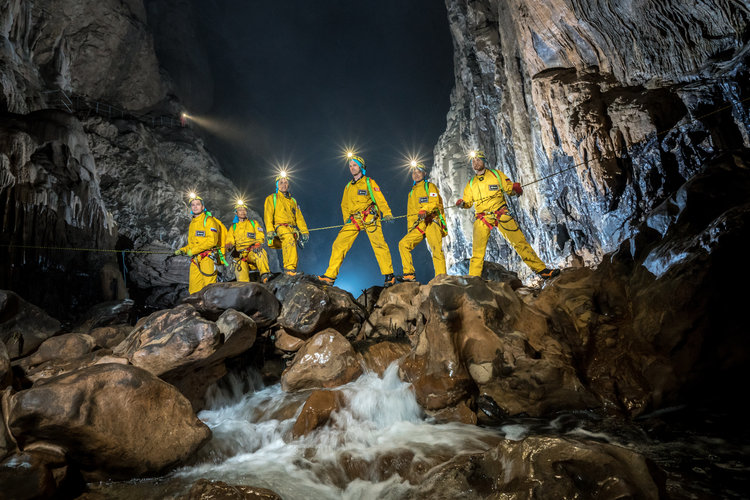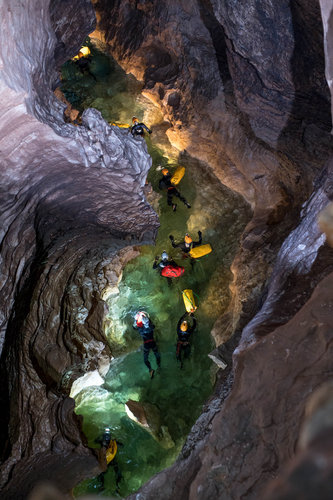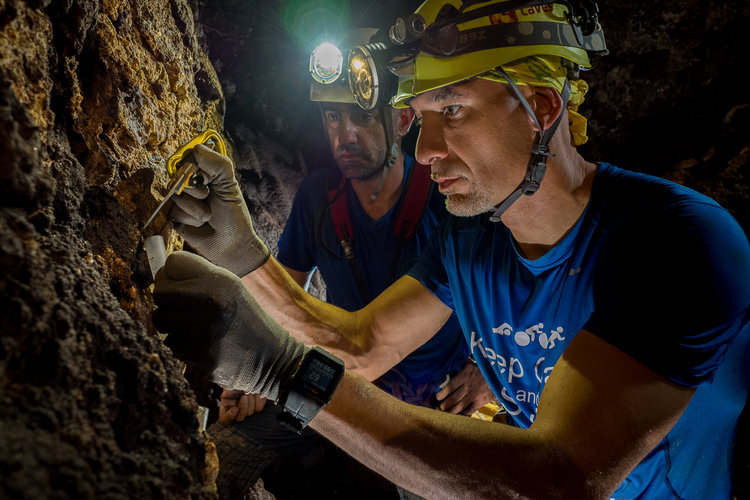Dry runs preparing for underground astronauts
ESA trainers and caving specialists recently went underground in Sardinia, Italy to set the scene for space-like astronaut training later this summer.
CAVES – short for Cooperative Adventure for Valuing and Exercising human behaviour and performance Skills – offers astronauts, trainers and planners a chance to test space-like procedures while exploring uncharted caverns in new environments.
This year, the CAVES team are stepping up the space realism and exploration while testing more technology and procedures.
No opportunity is missed to make the week-long stay underground resemble a space mission. The trainees will follow timeline and procedures, including handling equipment and communication protocols just as on the International Space Station.
Make before break

Clambering down to basecamp hundreds of metres below the surface using safety tethers is similar to conducting a spacewalk, and this year the procedures have been updated to include astronaut terminology.
In space an object can quickly float away and be lost forever. In caving, dropped equipment can be lost for ever in crevices or holes.
Passing equipment, cavers and astronauts must make sure the recipient is grasping the item before the first person lets go: “make before break” in astronaut lingo.
“Caves is an exploration mission,” explains CAVES exploration instructor Francesco Sauro, “and this year will be more difficult as the astronauts venture further from basecamp.”
For the first time the trainees will set up an outpost more than 5 km from basecamp to spend the night, following directions and maps drawn by ‘cavenauts’ from previous years.
“It will be interesting to see how they manage the further exploration,” continues Francesco. “As they distance themselves from basecamp it will get more challenging and I am curious to see how far they can go.”
Science and technology

As for any space mission, science is a priority so the astronauts will be measuring carbon dioxide and radon levels as well as taking microbiological samples of the life they encounter. New techniques will be put to the test using apps developed by the trainers at the European Astronaut Centre that could be used on the International Space Station in the near future.
Step-by-step instructions incorporating schedules, procedures, crew notes and data collection in a single application should speed up experiments to get more work done.
The cavenauts will be testing exciting new technology for cavers as well. A system combining 3D cameras, laser mapping and a wearable computer offers the potential to map uncharted areas in real time and build a detailed 3D map for later use.
“What we are doing will be very interesting and useful for cavers all over the world,” concludes Francesco.
This year’s five astronauts will be announced soon.















 Germany
Germany
 Austria
Austria
 Belgium
Belgium
 Denmark
Denmark
 Spain
Spain
 Estonia
Estonia
 Finland
Finland
 France
France
 Greece
Greece
 Hungary
Hungary
 Ireland
Ireland
 Italy
Italy
 Luxembourg
Luxembourg
 Norway
Norway
 The Netherlands
The Netherlands
 Poland
Poland
 Portugal
Portugal
 Czechia
Czechia
 Romania
Romania
 United Kingdom
United Kingdom
 Slovenia
Slovenia
 Sweden
Sweden
 Switzerland
Switzerland


























